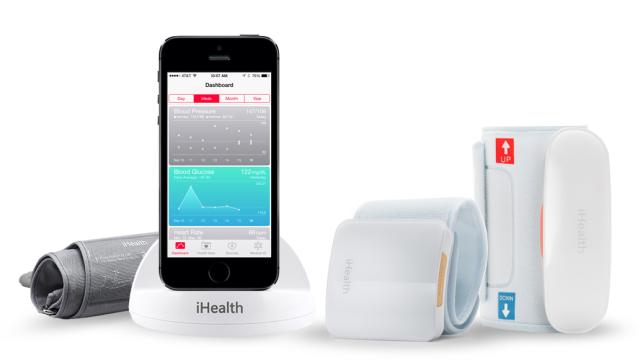iHealth was the first company to sell a medical device through Apple, so it’s only natural it’s also the first to fully integrate its products with Apple’s HealthKit. That means all the data iHealth’s connected monitors and trackers collect not only gets sent straight to the app, it’s also automagically logged in your electronic health record.
This is really exciting news. When Apple initially announced the Health app and HealthKit platform, it sounded like the holistic approach to health data we’d been waiting for. The app looked like an ever-evolving, personal electronic health record. Even hospitals were helping design the thing! Of course, anybody who got a sneak peek at the app wondered where exactly the health data was going to come from and how it would get to doctors. Obviously, Apple was thinking about this too.
So a couple of months ago, Apple approached iHealth to help fully integrate the company’s popular suite of connected medical devices into the Health app. In developing the new workflow, iHealth maintained its tradition of making the device experience as simple as possible. That also means that it also needed to be easy to transfer the data between devices and to allow it to be shared. You can manually input data, as well, and which data gets shared is up to you. Indeed, the finished product is downright elegant.

Now, if you’ve upgraded to iOS 8, you can seamlessly send data from your iHealth devices to the Health app, where you can look at and compare trends over time. If your health care provider uses Epic to manage electronic health records, that data can then go straight to your chart, so your doctors has it at his fingertips next time you go in for a visit. The Health app and HealthKit integration works across all nine of iHealth’s medical devices and can collect up to 15 different vital signs.
“Doctors have a more informed view,” iHealth CMO Jim Taschetta told Gizmodo in an interview. “They can literally look at data you collected and adjust medication based on that.” He added, “I think this is a really important turning point in how digital health monitoring can make a difference. This is an exciting time.”
Of course, if your doctor doesn’t use Epic for electronic health records, this innovation is probably slightly less exciting. There are other ways to share the data with your doctor, and over time, the HealthKit platform will surely support more hospitals, doctors, and electronic health records systems. Just as iHealth’s first connected devices opened up a new category of medical devices so many years ago, this new, deep integration with iOS is only the beginning.
iHealth is currently only available in the US and Europe.
Pictures: iHealth
